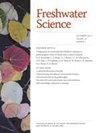Macroinvertebrate biomonitoring in Latin America: Progress and challenges
IF 1.6
4区 环境科学与生态学
Q3 ECOLOGY
引用次数: 3
Abstract
Macroinvertebrates are used as bioindicators worldwide, but the high diversity of macroinvertebrate species and endemism in Latin America (LA) requires greater knowledge of this group to increase the effectiveness of biomonitoring. We examined some of the primary taxonomic and ecological studies on macroinvertebrates in the region, quantified the number of papers that used foreign and local indices, examined alternative approaches to bioassessment that may be more relevant for the region, and explored freshwater ecosystem management in LA. Here, we highlight the need to increase taxonomic knowledge and the number of specialists in local fauna, establish and maintain taxonomic collections in public institutions, and make online databases on the biodiversity in each country available. However, we also demonstrate that taxonomy specialists of different nationalities do collaborate on the generation of fundamental information about biodiversity in LA. We found that 57% of the 215 reviewed scientific articles from LA used foreign but locally adapted indices for biomonitoring aquatic ecosystems. Only 21% of these articles presented local indices developed in LA. New technologies, such as environmental DNA, offer substantial potential for bioassessment but only in regions where sufficient taxonomic knowledge exists and where species-level stressor–response relationships are well described. In the absence of more complete taxonomic records, there could be some value in developing biological trait and multimetric indices, and occupancy models could be developed to analyze the relationship between taxa and stress factors. These tools could be adopted by researchers to generate more accurate biotic indices based on local taxa. Finally, in LA, bioindicators are used to support scientific research more often than as environmental monitoring tools. Environmental laws and regulations that support the biomonitoring of LA freshwaters and unified criteria for evaluating and monitoring aquatic ecosystems are essential to face regional and global challenges.拉丁美洲大型无脊椎动物生物监测:进展与挑战
大型无脊椎动物在世界范围内被用作生物指标,但拉丁美洲(LA)的大型无脊椎动物物种的高度多样性和特有性需要更多地了解这一群体,以提高生物监测的有效性。我们分析了该地区大型无脊椎动物的一些主要分类和生态学研究,量化了使用国外和本地指数的论文数量,研究了可能与该地区更相关的生物评估替代方法,并探讨了洛杉矶淡水生态系统管理。在此,我们强调有必要增加当地动物的分类知识和专家数量,在公共机构建立和维护分类收藏,并在每个国家建立在线生物多样性数据库。然而,我们也证明了不同国籍的分类学专家在洛杉矶生物多样性基础信息的生成上确实存在合作。我们发现,来自洛杉矶的215篇科学论文中有57%使用了国外但当地适应的水生生态系统生物监测指数。这些文章中只有21%介绍了在洛杉矶开发的本地指数。新技术,如环境DNA,为生物评估提供了巨大的潜力,但只有在有足够的分类学知识和物种水平的应激反应关系得到很好描述的地区。在缺乏更完整的分类记录的情况下,开发生物性状和多指标指标具有一定的价值,并且可以建立占用模型来分析分类群与胁迫因子的关系。研究人员可以利用这些工具来生成基于本地分类群的更准确的生物指数。最后,在洛杉矶,生物指标更多地用于支持科学研究,而不是作为环境监测工具。支持洛杉矶淡水生物监测的环境法律法规以及评估和监测水生生态系统的统一标准对于应对区域和全球挑战至关重要。
本文章由计算机程序翻译,如有差异,请以英文原文为准。
求助全文
约1分钟内获得全文
求助全文
来源期刊

Freshwater Science
ECOLOGY-MARINE & FRESHWATER BIOLOGY
CiteScore
4.10
自引率
0.00%
发文量
49
审稿时长
6-12 weeks
期刊介绍:
Freshwater Science (FWS) publishes articles that advance understanding and environmental stewardship of all types of inland aquatic ecosystems (lakes, rivers, streams, reservoirs, subterranean, and estuaries) and ecosystems at the interface between aquatic and terrestrial habitats (wetlands, riparian areas, and floodplains). The journal regularly features papers on a wide range of topics, including physical, chemical, and biological properties of lentic and lotic habitats; ecosystem processes; structure and dynamics of populations, communities, and ecosystems; ecology, systematics, and genetics of freshwater organisms, from bacteria to vertebrates; linkages between freshwater and other ecosystems and between freshwater ecology and other aquatic sciences; bioassessment, conservation, and restoration; environmental management; and new or novel methods for basic or applied research.
 求助内容:
求助内容: 应助结果提醒方式:
应助结果提醒方式:


